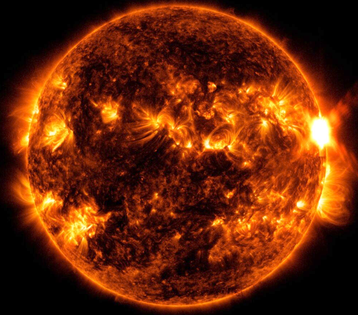A solar flare disrupted radio and navigation signals across North America, as experts warned of more on the way.
The flare was an X1.5 flare, with X-class denoting the most intense flare, with the number its level of strength. The Monday event came just days after an X1.6 flare on Saturday.
The UK's Met Office issued a warning for the mild solar radiation storm due to the presence of charged solar particles in Earth's atmosphere. The event, currently a 'mild category 1,' should not lead to damage to satellites, infrastructure, or individuals.
More flares are likely while the large sunspot cluster that the previous two came from remains visible on the face of the sun. It is expected to disappear behind the sun's edge within the next two days, however.
"The X1.5 Flare caused an R3 (strong) radio blackout event on the daylit side of the Earth (most of the US and Canada and the Pacific Ocean)," solar physicist Keith Strong said on Twitter. "Frequencies below 5Mhz were most affected and navigation signals degraded."
When a solar event occurs, space weather prediction centers can give hours’ to days’ notice of when it is expected to reach Earth, but they lack information on the severity and risk.
Earlier this year, the Uptime Institute's Jacqueline Davis wrote about the risk of geomagnetic disturbances for DCD.




